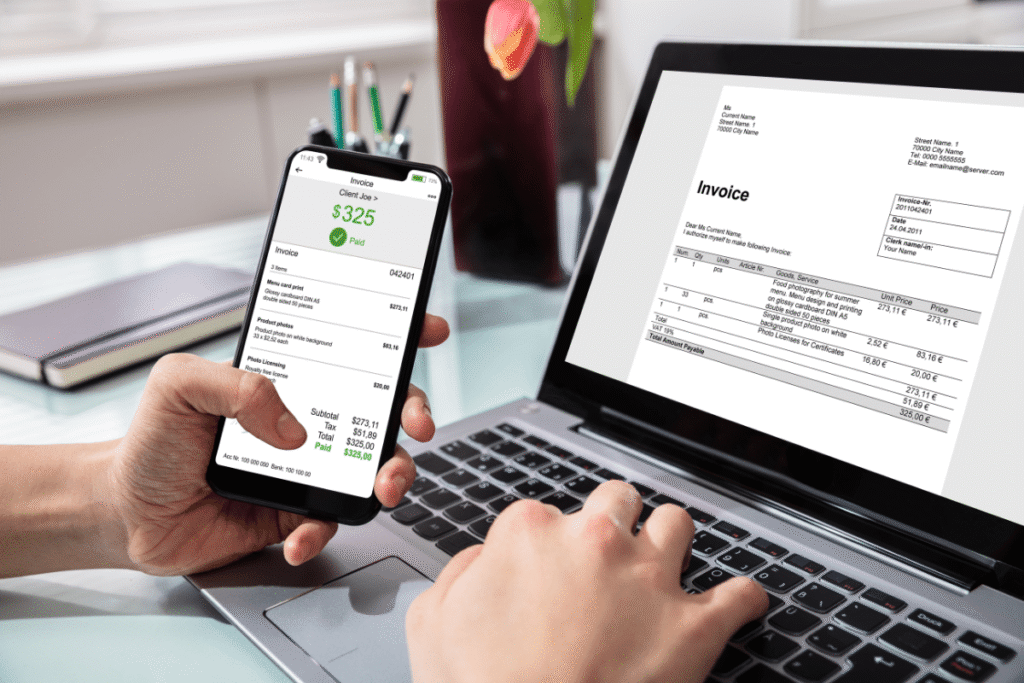
Step-by-Step: How to Sign Direct Clients by Building Your Freelance Brand
Have you also read from DemandSage statistics that there are now over 18 million freelancers on Upwork, one of the most well-known freelancing sites?
Yes, you read it right. Not 18 thousand, but 18 million people from 180 countries.
That may sound too overwhelming for aspiring and newbie freelancers, seeing how saturated the market is, on just one platform alone.
But discouragement isn’t in our list of advice!
So, I’m gonna share with you EXACTLY how I get to work with direct clients.
We’ll divide your “to-do” list into 3 parts. Yup, these are actionable tips!
Be ready and pumped to do the work so you can finally experience the shift, Bosses!
PHASE 1: PREPARATION
Given that you already have the basic equipment like a computer and internet connection, here are the 3 most important things to prepare so that you don’t feel lost, wondering, and wandering in the freelancing field
1. Payment Account and Invoice Template
The same with your payroll card in the corporate, you also need a payment account where clients can transfer funds.
If you have local clients (Filipino clients), you can simply send them your bank account details, including your Full Name and Account Number, or even your e-wallet account like GCash.
Actually, you can now also simply send your bank account details to foreign clients, and they’d use some international money transfer platform.
So, it’s also better to open an account in these payment gateways.
Alongside setting up an account on these platforms, this is the best time to get your invoice template ready, too!
2. Service Package and Offers

⚙️ In your service package, simply include:
- the list of tasks you’d do for the client
- the amount you charge (either per hour or per project)
Have you ever experienced panicking as the prospective client waits for your reply after they ask you, “How much is your rate?”
In closing deals, time matters. The client might be connecting with other freelancers too and decide to work with them because they’ve responded quickly. Smooth transactions are what clients prefer.
3. Onboarding Process

Now that the client has finally decided to work with you. What’s next?
Should you immediately do the tasks?
How can you access their files?
That’s when onboarding steps in to make things easier for you and your client.
You can create a Welcome Packet via Google Docs or Canva.
⚙️ Here, you include:
- your welcome message
- the package they availed
- the communication channel you’ll be using and the business hours
- the service description, deliverables, and expectations
- your process, timeline, and important dates to take note of
- service billing
- a checklist of the things they need to share with you to start the project
- client’s guide
- your socials (in case they wanna connect with you on other platforms)
- service contract
PHASE 2: POSITIONING
Now that you’ve set up your process, it’s time to shine!
Positioning yourself as an online freelancer requires time and effort, but worth it!
1. Brand Kit

⚙️ Craft something you’ll be proud to showcase!
- Logo
- Color Palette
- Typography
- Patterns and Design
- Moodboard
- Brand Voice
What brand identity would you like your clients to see?
Who are you as a freelancer?
This helps you build a presence that is consistent throughout your business accounts.
Easier to remember. Better brand recognition.
2. Social Media Accounts

This is going to be your digital showroom where prospective clients can see what you’ve got.
That’s why you must set aside time building and optimizing your social media presence so that clients can see you (and reach out to you!)
- Choose 1 to 2 social media platforms and create an account there. TikTok, Facebook, Instagram, LinkedIn, Threads, YouTube. Ideally, the platform where your ideal clients are.
- Optimize it by adding relevant keywords in your brand name or username, in the bio, or the About section. Even in the hashtags and content keywords you use.
- Create and post valuable content on your freelance page. Educate and show them you know what you’re offering, inspire them, and of course, tell them about your services.
3. Sales Page

Sounds like something only pro freelancers do? That’s the goal. To go all-in!
This single page (yes, this isn’t a website with multiple pages) can literally make prospective clients become YOUR PAYING CLIENT.
HOW?
Make it flow in a way that every scroll convinces the client to work with you.
Usually, it goes like this:
- You have a headline
- You make them aware of their business problems, challenges, or struggles
- Then, you offer them how you can help
- Of course, you introduce yourself so they’ll know who they’ll be working with
- List down the benefits they’d get
- Include screenshots of reviews from test clients (if you have)
- List down the relevant tools you know how to use
- Show your portfolio, process, and other trust signals like certifications (not required, but might help you get started, especially if you have no testimonials yet)
Here’s a free tutorial you can watch and a landing page template you can check out.
PHASE 3: PARTNERING
As you build the credibility of your freelance service by establishing your presence, it also creates opportunities to connect with your ideal clients and other freelancers in the field.
How?
1. Connect

Remember these 2 and you’re good to go: authenticity and value.
- If you’re building a brand on Instagram, start following both your ideal clients and other freelancers. But don’t just connect with money in mind.
Be curious about what they do and leave genuine comments on their posts or like their stories (if it really moves you), not simply liking every single upload for the sake of “connecting”. - If you prefer Facebook, you can join communities (a.k.a Facebook groups).
But not just random groups. Find the group where your ideal clients are.
Show up there. Introduce yourself. Engage with the other members’ posts.
Even on other platforms like LinkedIn, being genuine in connecting and giving value is key!
2. Pitch

As controversial as it is, I believe pitching is never really a bad thing.
What makes it appear as an “annoying marketing strategy” is the way other people do it.
So, here are 2 things to keep in mind to “NOT” annoy your ideal clients:
- DON’T randomly pitch your service. Connect with them first (the one we discussed earlier)
- DON’T copy and paste a generic script. Take time to check their profile and see what value your service can bring to their business.
3. Referrals

Never underestimate the power of connecting with other freelancers.
If there’s one thing I’d like you to know as you enter this industry, it’s that other freelancers (even the ones offering the same service as you) aren’t looking for business rivals. They’re actually happy to refer clients or projects they can’t take on once they’re fully booked.
So, be sure to enjoy getting connected with them.
As the famous marketing quote says, “Your network is your net worth.”
You can go through these 3 phases in 3 weeks.
A week to prepare. A week to start building your brand presence. A week to connect.
Then, show up over and over until you get to finally say, “Wow, I made it.”
Reference List:
Kumar, N. (2024, November 5). 31 Upwork Statistics (2025) – Number of Freelancers & Revenue. Retrieved from DemandSage website: https://www.demandsage.com/upwork-statistics

